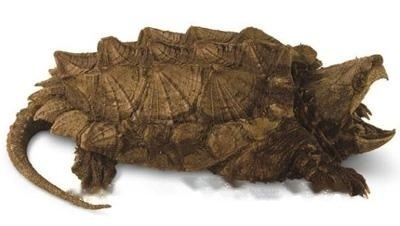
Snapping turtle
Real snapping turtles look like crocodiles fish, Set turtle and crocodile in one, so called true snapping turtle. Its head is relatively thick and cannot be completely retracted in
Alias Red EarTurtle, Brazilian Painted Turtle, Red-eared Painted Turtle, Beautiful Painted Turtle
English name Red-ear slider; Pond Slider
Body Length 15-25cm
Origin Americas
Price ――
| Stickness: | Happiness: | ||
| Hair loss: | Body Odor: | ||
| Beauty Frequency: | Kids Friendly: | ||
| Yes Friendly people: | Animal Friendly: | ||
| Amount of exercise: | Trainability: | ||
| saliva level : | Cold Hardiness: | ||
| Heat Resistance: | Urban Adaptation Degree: |
1. Brazilian Tortoise The basic introduction of Also known as: red-eared turtle, Brazilian painted turtle, beautiful painted turtle, mahjong turtle, colorful turtle, red-eared lateral line turtle, red-eared skateboard turtle. The head of the Brazilian turtle is small, the snout is blunt, the head and neck have vertical stripes inlaid with yellow and green, and there is a pair of red patches behind the eyes. The carapace is flat, with circular green stripes on each scutellum, with a serrated trailing edge. The plastron is pale yellow, with a black ring pattern, like a copper coin, and the pattern of each turtle is different. The trailing edge is not serrated. Toes and interdigital webs are abundant. There are large dark spots on the abdomen of the soft-shelled turtle, which is fierce in character, flexible in movement and more aggressive. And the skin is smooth, the body is thin and the skirt is wide. The plastron has large dark spots. Each tortoise has a different personality, some individuals are fierce and aggressive, while others are tame and timid. The skin is rough compared to humans (but smoother than other turtles), the shell is thinner (compared to tortoises and yellow-margined box turtles), and the tortoise shell has a broad edge and a golden color of fat. The shell of the Brazilian tortoise is not hard among turtles. In the wild, ordinary carnivores (such as mountains, jaguars, etc.) can bite the shell of the Brazilian tortoise. |
The reason for the name of the Brazilian turtle The red-eared tortoise is more commonly known as the Brazilian tortoise, but it is not native to Brazil, but to the Mississippi River in the United States. Trachemys dorbigni, which was first introduced to Taiwan and called "Brazilian tortoise", is actually a South American painted tortoise (Trachemys dorbigni) from South America. Gao and changed to imported red-eared turtles. Although the South American painted turtles have been replaced by red-eared turtles, the name "Brazilian turtles" has been used on red-eared turtles to this day. The early Brazilian tortoises sold in Hong Kong and Taiwan were indeed South American tortoises. Later, due to various reasons such as transportation costs, the authentic Brazilian tortoises were withdrawn from the market, and thus were sold by their closest relatives. No, it should be said to be its subspecies, the subspecies that lives in North America - the Mississippi red-eared turtle instead. The only difference between the authentic South American red-eared turtle and the North American red-eared turtle is the red spots on both sides of the head. The red-eared turtle in North America has this pair of red spots, but the red-eared turtle in South America does not. These two species of tortoises of the same family and genus can be interbred to produce offspring. |
Three, the origin of Brazilian tortoise Its origin is not in Brazil, but in the Mississippi and Rio Grande river basins in North America. North America America is rich. Latin name: Trachemys scripta eans English name: Red-ear slider; Pond Slider Size: about 15~25cm in length |
4. Living habits of Brazilian tortoise The Brazilian tortoise has an active habit, likes to live in the water, is not afraid of people, and has a strong ability to adapt to the environment. The water temperature suitable for growth is 20-32 ℃, and the optimum growth water temperature is between 25-30 ℃. When the temperature is below 20°C, the food intake is reduced, and the activity is less active; when the temperature is below 15°C, the food intake is basically stopped; the activity is significantly reduced below 10°C, and it is in a semi-dormant state. Brazilian tortoises are omnivorous turtles, mainly carnivorous during artificial breeding, especially in the juvenile and juvenile stages, mostly small fish, shrimp, animal lean meat, etc. In the adult turtle stage, they can also eat plant-based feeds (plantains, fruits, etc.) and compound feeds for workers. Brazilian turtles eat a lot and grow faster than. Generally, hatchlings hatched from July to September can reach an average of 25-40 grams before overwintering in the normal temperature, sufficient food and normal breeding conditions. Commodity turtle specifications up to 400 grams or more. However, the growth rate of male and female tortoises was not consistent, with the latter being significantly faster than the former. |
V. Classification of Brazilian tortoises Classification of Trachemys List Names of subspecies: stejnegeri vicina stejnegeri mali Trachemys scripta yaquia Trachemys scripta venusta tabasco Trachemys scripta troostii Trachemys scripta taylori Trachemys scripta ornata Trachemys scripta nebulosa Trachemys scripta hiltoni Trachemys scripta grayi Trachemys scripta gaigeae Trachemys scripta eans Mississippi (Brazil) red-eared turtle Trachemys scripta collirostrisTrachemys scripta chichiriviviche Trachemys scripta aspila Trachemys terrapen Jamaican painted turtle Trachemys stejnegeri painted turtle Trachemys scripta painted turtle Trachemys dorbigni painted turtle Trachemys decussata Trachemys decorata Hispaniola Painted Turtle |